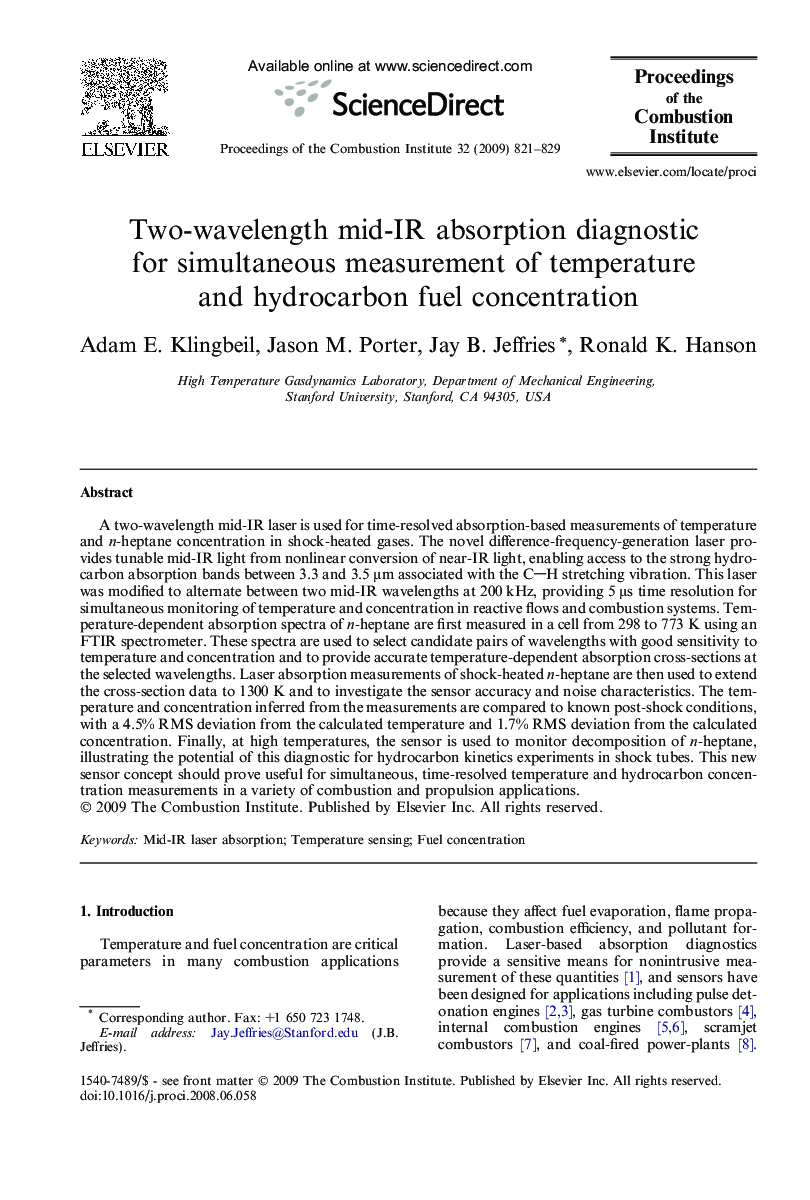| Article ID | Journal | Published Year | Pages | File Type |
|---|---|---|---|---|
| 6679479 | Proceedings of the Combustion Institute | 2009 | 9 Pages |
Abstract
A two-wavelength mid-IR laser is used for time-resolved absorption-based measurements of temperature and n-heptane concentration in shock-heated gases. The novel difference-frequency-generation laser provides tunable mid-IR light from nonlinear conversion of near-IR light, enabling access to the strong hydrocarbon absorption bands between 3.3 and 3.5 μm associated with the CH stretching vibration. This laser was modified to alternate between two mid-IR wavelengths at 200 kHz, providing 5 μs time resolution for simultaneous monitoring of temperature and concentration in reactive flows and combustion systems. Temperature-dependent absorption spectra of n-heptane are first measured in a cell from 298 to 773 K using an FTIR spectrometer. These spectra are used to select candidate pairs of wavelengths with good sensitivity to temperature and concentration and to provide accurate temperature-dependent absorption cross-sections at the selected wavelengths. Laser absorption measurements of shock-heated n-heptane are then used to extend the cross-section data to 1300 K and to investigate the sensor accuracy and noise characteristics. The temperature and concentration inferred from the measurements are compared to known post-shock conditions, with a 4.5% RMS deviation from the calculated temperature and 1.7% RMS deviation from the calculated concentration. Finally, at high temperatures, the sensor is used to monitor decomposition of n-heptane, illustrating the potential of this diagnostic for hydrocarbon kinetics experiments in shock tubes. This new sensor concept should prove useful for simultaneous, time-resolved temperature and hydrocarbon concentration measurements in a variety of combustion and propulsion applications.
Related Topics
Physical Sciences and Engineering
Chemical Engineering
Chemical Engineering (General)
Authors
Adam E. Klingbeil, Jason M. Porter, Jay B. Jeffries, Ronald K. Hanson,
